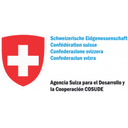Executive Secretary

10th International Scientific Conference on Agricultural Development and SustainabilityAGROCENTRO 2023
Agrocentro 2021
Abstract
The work was carried out within the framework of the project "Comprehensive development of precision agriculture in the Jesús Rabí sugar mill" in the province of Matanzas. A case study was carried out for the analysis of the pests in the sugar cane crop and the factors that influenced their performance in the grower’s farm Dagoberto Rojas, based on the information generated by the application of the Plant Protection Service. The main result of the study reflects the presence of smut, brown rust, borers, defoliators, leafhoppers and rodents, without records of leaf scald, mosaic and elaterids in the areas of the farm during the years 2010-2020. It was considered that the situation in relation to pests was favorable in the farm, given its low incidence in the period analyzed, despite the predisposition of exhibiting a composition of varieties that provides a high percentage of areas occupied with varieties susceptible to four of the main pathologies of the crop. The greatest contribution to brown rust infection was made by blocks 0601, 0603, 0608 and 0607, while blocks 0601, 0602 and 0603 contribute to borer infestation. The management measures applied in relation to the releases of Lixophaga diatraeae contributed to the decrease the incidence of the borer, which shows the efficiency of the recommendations, so it is recommended to continue with them, as well as to adopt a management of the composition of varieties with a greater presence of genotypes in favor of increasing resistance, to protect the incidence levels of brown rust, cald, mosaic and smut.
Resumen
El trabajo se realizó en el marco del proyecto “Desarrollo integral de la agricultura de precisión en la Unidad Empresarial de Base Jesús Rabí” de la provincia de Matanzas. Se efectuó un estudio de caso que consistió en el análisis de las plagas en el cultivo de la caña de azúcar y los factores que incidieron en su comportamiento en la CPA Dagoberto Rojas, a partir de la información generada por la aplicación del Servicio Fitosanitario. El resultado fundamental del estudio refleja la presencia de carbón, roya parda, barrenadores, defoliadores, saltahojas y roedores, sin registros de escaldadura foliar, mosaico y elatéridos en las áreas de la CPA durante los años 2010-2020. Se consideró que la situación en relación a las plagas fue favorable en la unidad, dado su baja incidencia en el periodo analizado, a pesar de la predisponente de exhibir una composición de variedades que aporta un porcentaje elevado de áreas ocupadas con variedades susceptibles a cuatro de las principales patologías del cultivo. La mayor contribución a la infección por roya parda la aportaron los bloques 0601, 0603, 0608 y 0607, mientras que el 0601, 0602 y 0603 tributan a la infestación por barrenador. Las medidas fitosanitarias aplicadas en relación a la liberaciones de Lixophaga diatraeae contribuyeron a la disminución de la incidencia del barrenador, lo que demuestra la eficiencia de las recomendaciones, así como adoptar un manejo de la composición de variedades con mayor presencia de genotipos a favor de incrementar la resistencia, para proteger los niveles de incidencia de roya parda, escaldadura, mosaico y carbón.
About The Speaker

Mérida Rodríguez


